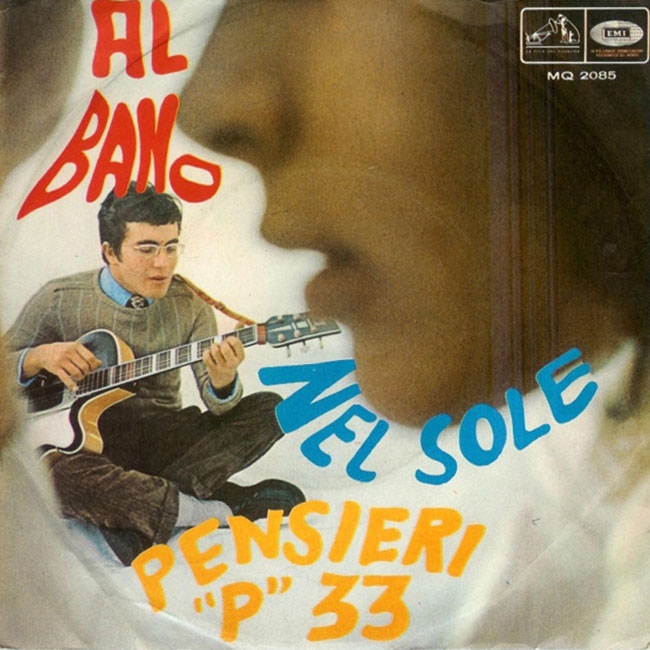Nel sole

(Pino Massara, Vito Pallavicini) – Al Bano, 1967
At the end of April 1967 I recorded Nel sole, the song that, as I said before, was and still is my warhorse.
Even though I had never studied music, I composed songs. I followed my instincts, I elaborated on the guitar the melodies that formed inside me and, once finished, I recorded them on a tape recorder. I was so “full” of music that I was constantly composing. Then I would go and make Pino Massara and Detto Mariano listen to these melodies.
One day, I brought two pieces of music to Maestro Massara, and I let him listen to them. “They’re both beautiful,” he told me, “but, in my opinion, they make one single song.”
He rearranged some movements. He took the introduction of one piece and added the refrain of the other. In short, he used the most significant parts, sewing them together with great skill, with the finesse of an ancient master craftsman. Then he sat at the piano and made me listen to the result.
He was right. From those two songs a new and fantastic song had sprung. “This song is a masterpiece,” Massara told me. Then he entrusted the task of composing the lyrics to Vito Pallavicini, and Nel sole was conceived. Pallavicini was inspired by my life, my ideas about nature, my connection with the sun that in Puglia, where I was born, is an intense and benevolent presence.
The melodic line of Nel sole is simple but extraordinarily powerful. It allows the voice to express itself completely. Especially for a voice like mine, which has always had a very wide vocal range, like a tenor’s. By singing Nel sole I could go up and up in the treble with great spontaneity, singing fully at the top of my voice to create a cheerful chant similar to those of Apulian farmers when they are in the fields. In performing it, had the feeling of being beneath the olive trees of Cellino, at work under the powerful but generous sun of my land. With this song, I was at home, I found my roots and the world of my childhood. The audience felt the same emotions I experienced and transmitted.
Quoted from: Carrisi, Albano-Allegri, Roberto, È la mia vita, Milano, Mondadori, 2006, pp. 84-85
